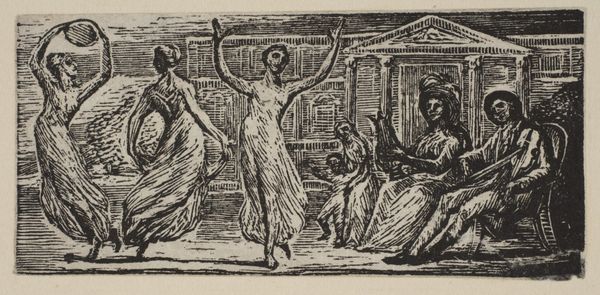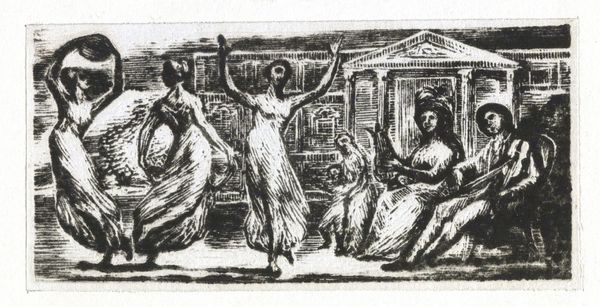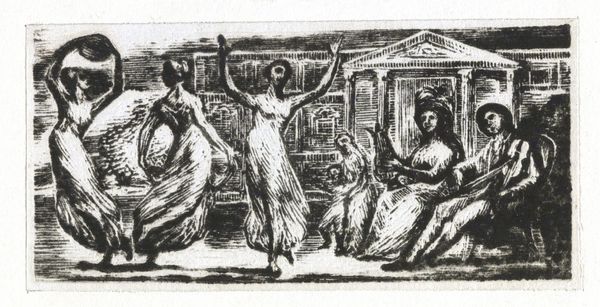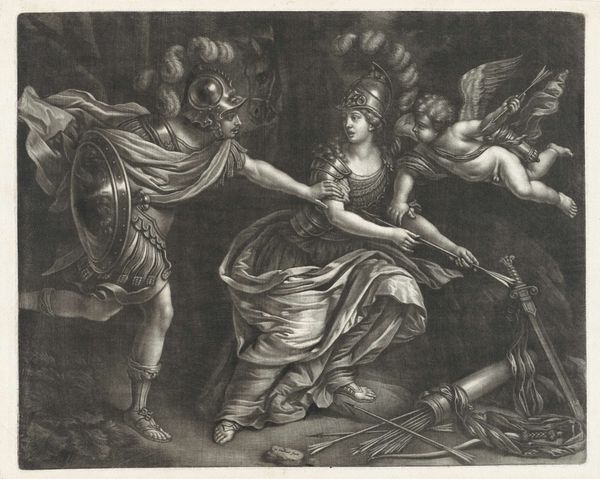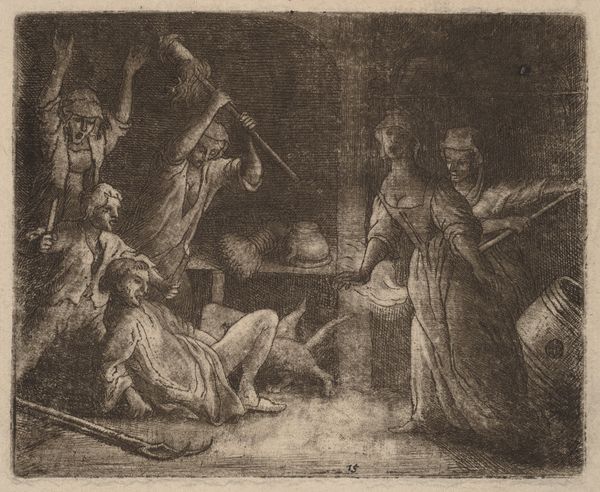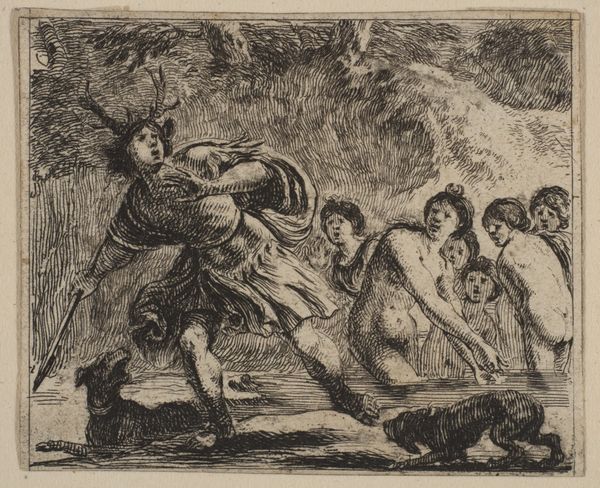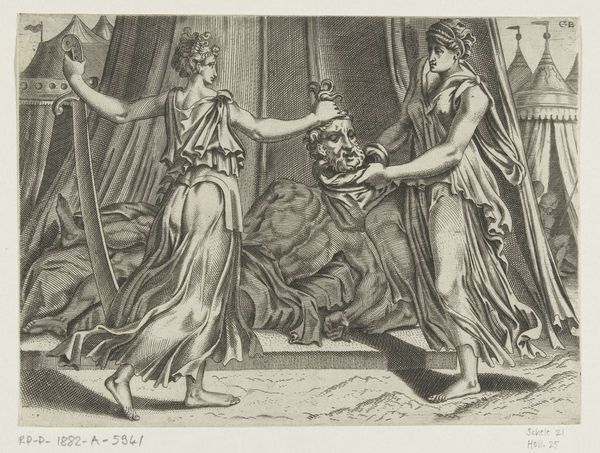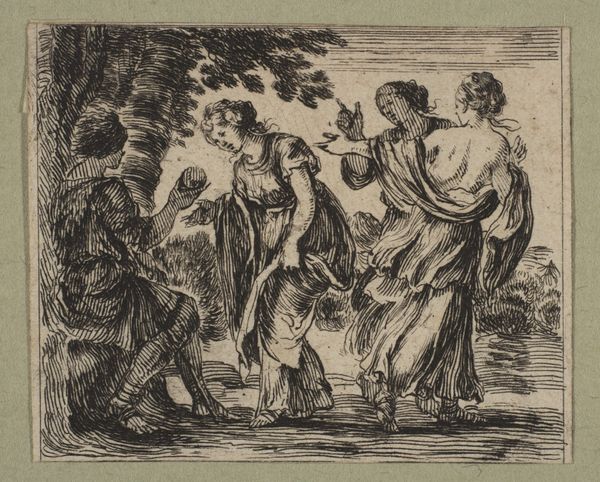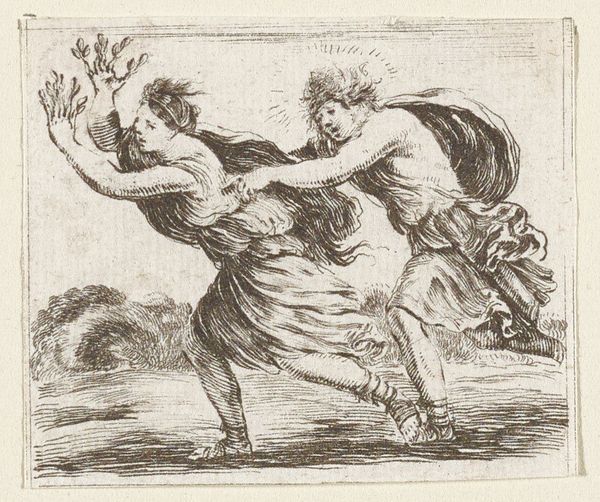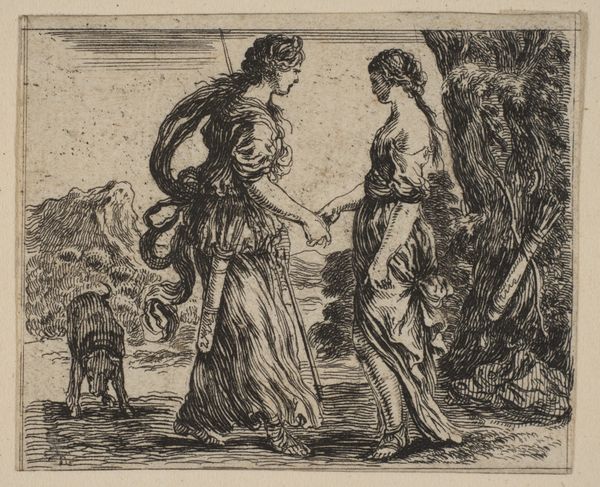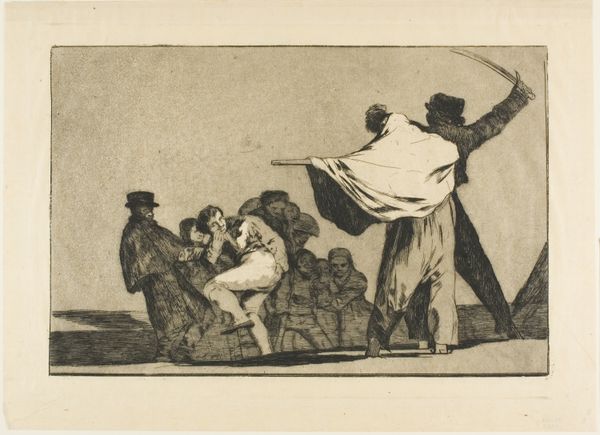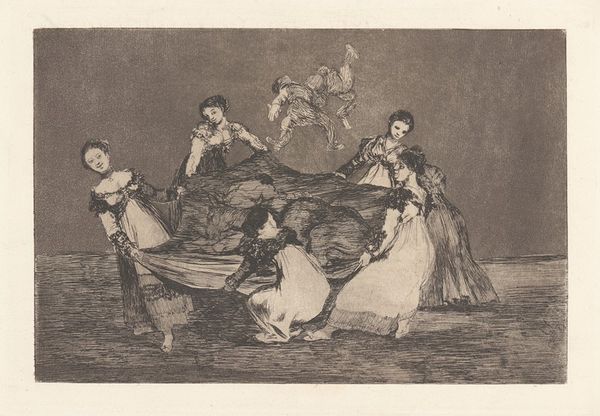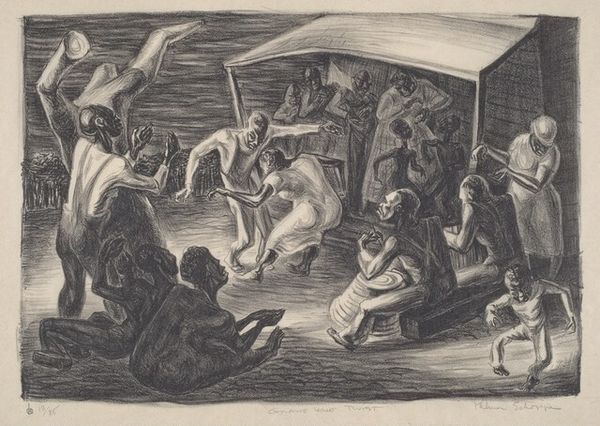
Menalcas Watching Women Dance, from The Pastorals of Virgil 1821
0:00
0:00
drawing, print, paper, ink, engraving
#
drawing
#
ink drawing
#
allegory
# print
#
paper
#
ink
#
classicism
#
genre-painting
#
history-painting
#
engraving
Dimensions: 34 × 77 mm (image/block); 5 × 79 mm (sheet)
Copyright: Public Domain
Curator: This is William Blake's "Menalcas Watching Women Dance, from The Pastorals of Virgil," created in 1821, now residing here at the Art Institute of Chicago. What are your immediate impressions? Editor: It looks almost like a miniature stage production captured in ink. The stark black and white gives it a heightened, dreamlike quality. You can really see the engraver's mark, too. It really reveals that meticulous carving into the plate, the labor, you know? Curator: Indeed. Blake’s visual vocabulary, steeped in biblical and classical traditions, suggests much more than a simple observation. The dancing women evoke notions of grace and ecstasy, perhaps alluding to a pre-Christian, pastoral innocence. The dance as liberation from social convention, what do you make of that? Editor: But look at the materials; this is printmaking at the crux of social reproduction, labor and availability. Multiple prints could be produced, disseminated—cheaply even! Not the rarefied object for a single collector but a vehicle of ideas. The class aspect interests me. These onlookers clearly exist within the structure. Curator: A pertinent point, to see the engraving as an engine for ideas rather than merely aesthetic object. The viewer then holds a symbolic key, perhaps, invited to question the relationship between freedom, represented by the dance, and the social order represented by the spectators. It brings forth that universal dialogue of human desire against expectation. Editor: And within the production of printed images – the possibility to distribute dissenting ideas! Blake's process is itself interesting, engraving words and images on the same plate, which fuses visual and textual dissemination as equally accessible means of influence. Curator: Precisely. Thank you for illuminating both the artistry and the potential cultural reach of this image. I am freshly reminded that art transcends simple image-making to become cultural dialogue and even protest. Editor: Absolutely. The piece leaves you contemplating the impact of those early material processes.
Comments
No comments
Be the first to comment and join the conversation on the ultimate creative platform.
